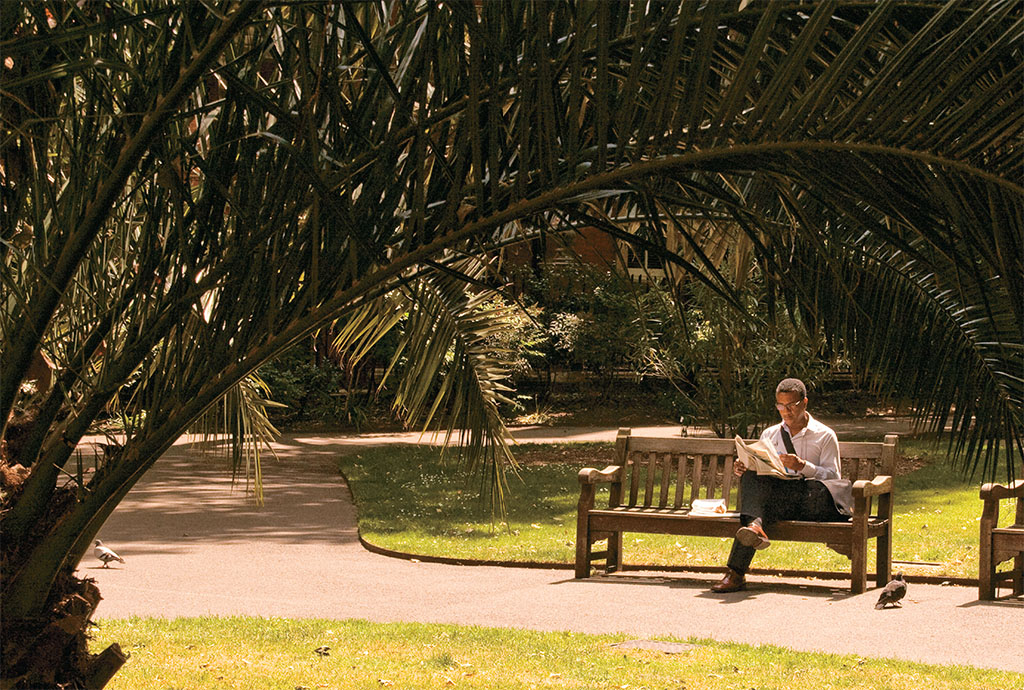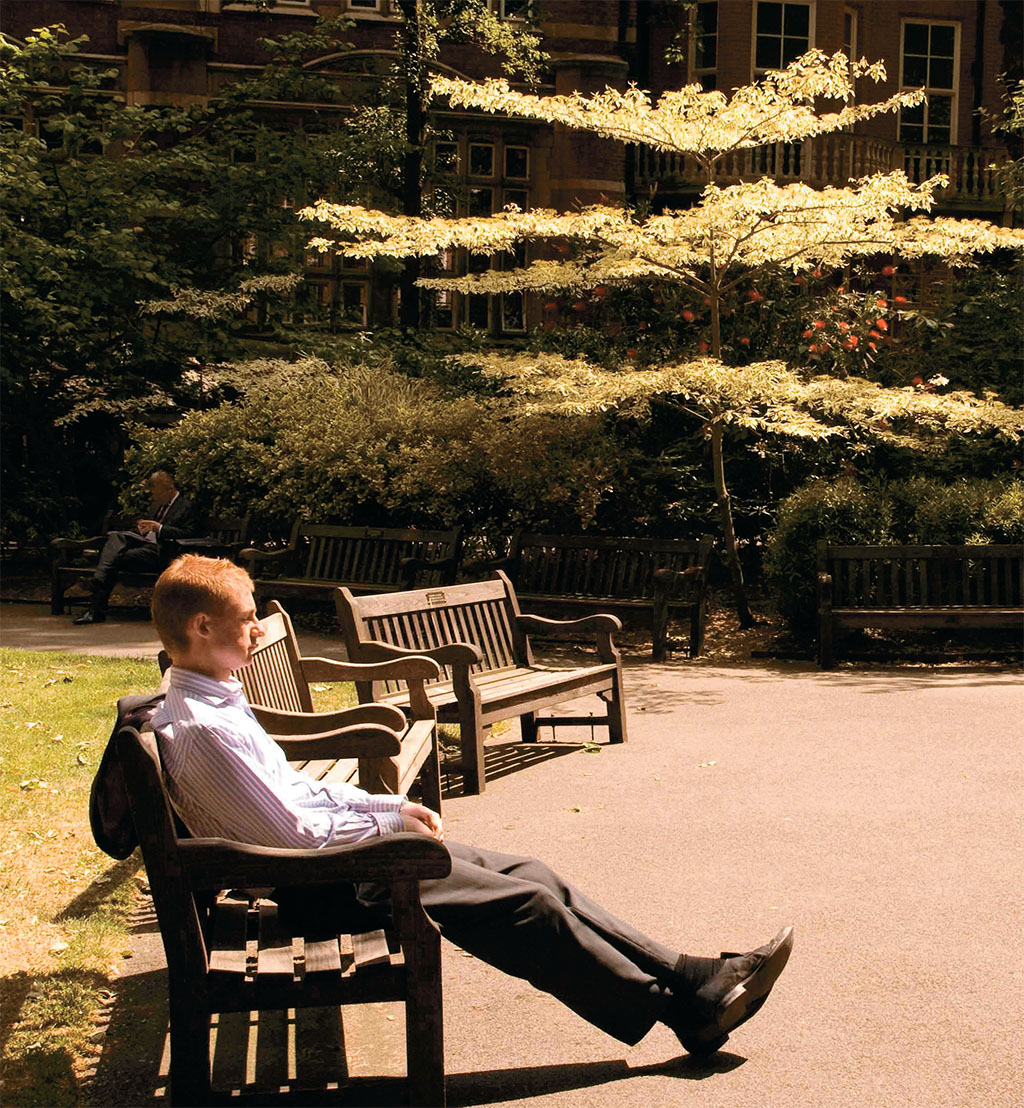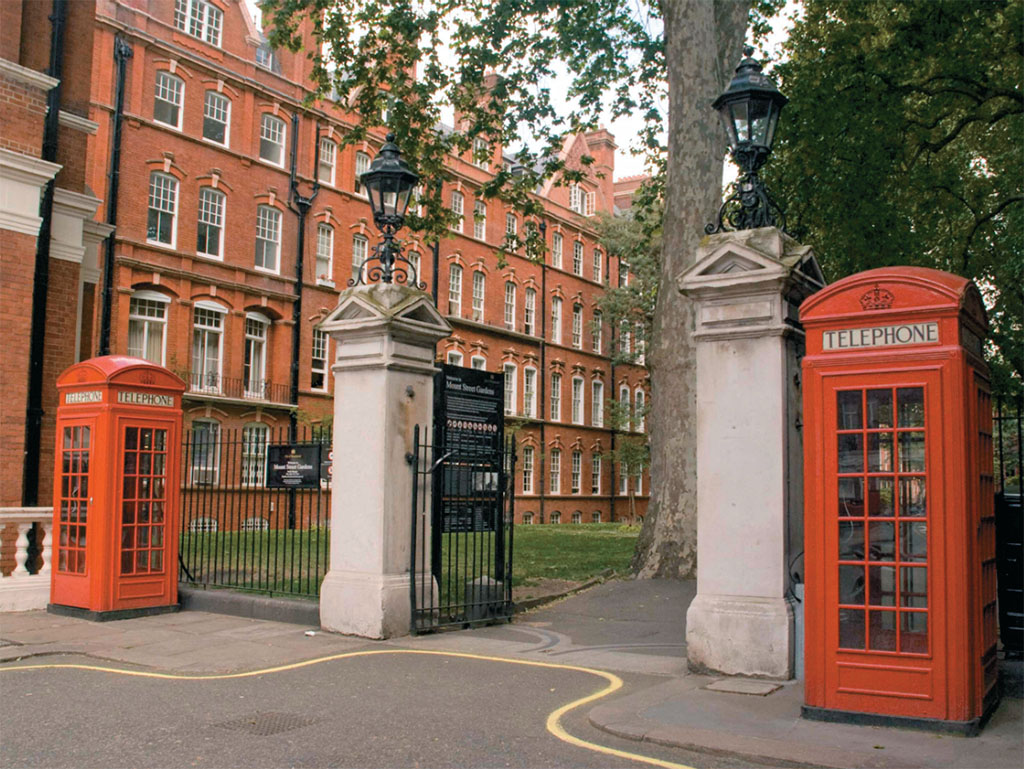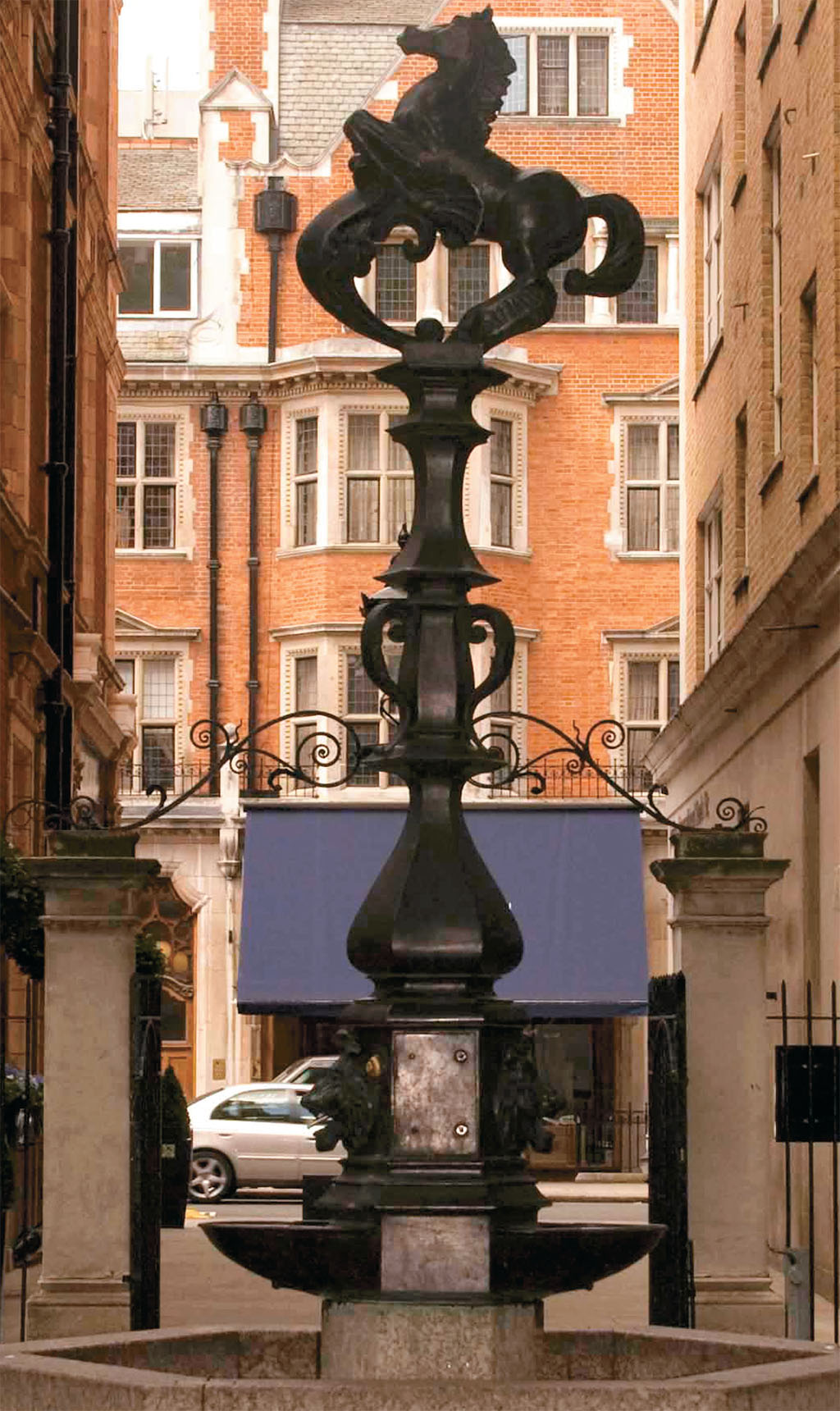
An oasis of quiet tucked away in busy Mayfair
[caption id="MountStreetGardens_Feature" align="aligncenter" width="1024"]

SANDRA LAWRENCE
The Mount Street Gardens in the heart of fashionable Mayfair is one of London’s hidden treasures. Even Londoners familiar with their city are often surprised to stumble upon this secluded spot. While there are other entrances on Mount and Farm Streets, the small cul-de-sac just off South Audley Street offers a picturesque way to enter the gardens with its camera-ready photograph of traditional red telephone booths framing either side of the gates. The cul-de-sac has the Grosvenor Chapel on one side and the impressive red and white Victorian building that houses the Mayfair Public Library on the opposite side. Over the next several years the West-minster City Council hopes to provide funding to renew and maintain the infrastructure of the gardens and to renovate this South Audley Street entrance.
Built in 1730 the Grosvenor Chapel was used as a model for many early churches in the New England states. The chapel has strong associations with Americans dating back to World War II, when men and women in the U.S. armed services often attended services there. John Wilkes, the 18th-century English radical MP, who was involved in extending the political rights of ordinary citizens and whose coffin bore the words “A Friend of Liberty,” is buried in Grosvenor Chapel. Today, the Chapel remains a focal point for the residents of Mayfair, and its free classical music concerts on Tuesday afternoons at 1:10 p.m. are another little-known secret.
50 HIDDEN GEMS AN ONGOING SERIES
Walk into the compact gardens, and the first thing you notice is the silence. The hustle and bustle of Mayfair does not breach its gates. Colorful flower beds and various fragrant shrubs scent the air while mature towering trees provide a comfortable shade on a sunny day. Perhaps due to its current proximity to the American Embassy at Grosvenor Square (soon to be relocated to Wandsworth across the river Thames), these gardens have a strong association with Americans. There are many comfortable wooden benches lining the footpaths, and a number of them have been dedicated to and by Americans. The inscribed dedications give visitors a sense of the people who used these gardens in the past. “An American who could not find a park like this in New York,” “Hands across the sea from America,” “A New Yorker at home in London”—these and other inscriptions surely reveal the love that knowledgeable Americans have for this precious area. Yet another bench, one dedicated to the gardeners, is from “a Texan who spent many happy hours here.”
‘THE FIRST THING YOU NOTICE IS THE SILENCE. THE HUSTLE AND BUSTLE OF MAYFAIR DOES NOT BREACH ITS GATES’
[caption id="MountStreetGardens_img1" align="aligncenter" width="1024"]

SANDRA LAWRENCE
Centuries ago the grounds now occupied by the gardens were a cemetery associated with St. George’s Church in nearby Hanover Square. However, an Act of Parliament in 1854 closed cemeteries in the heart of London because of health risks, and the grounds were next used as a workhouse to provide work, board and lodgings for the poor. After the workhouse was demolished in 1886, the area was redeveloped, and the new plans provided for the present space which opened in 1889. The gardens are primarily a place of relaxation, enjoyment and beauty, and the Westminster City Council strives to keep them “safe, clean and aesthetically pleasing.”
[caption id="MountStreetGardens_img2" align="aligncenter" width="1024"]

SANDRA LAWRENCE
[caption id="MountStreetGardens_img3" align="aligncenter" width="1024"]

SANDRA LAWRENCE
While the footpaths can be walked from one end to the other in a few minutes, the gardens seem larger than they are because of the sense of peacefulness they foster. Informational panels are posted so that it is easy to identify the many birds and trees there. Song thrushes, crows, robins, blackbirds, blue tits and starlings all flock to the birdbath. The Plane trees are common throughout central London because they were able to thrive despite the city’s once heavy air pollution. There are also trees from China and Japan, and some such as the Canary Islands Date Palm, which are able to survive the northern clime because of shelter provided the gardens by the surrounding buildings. A huge bronze drinking fountain with the statue of a rearing horse recently underwent a complete restoration, paid for with donations from local residents.
The streets that lead into the gardens offer a pleasant stroll around this part of London. South Audley Street, one of the main arteries of Mayfair, is lined with fine 18th-century houses as well as upscale shops and restaurants. This street has been home to Thomas Goode, makers of fine china, crystal and silverware since 1827. The Mount Street gates lead out to Carlos Place, where the luxurious Connaught Hotel, more like a country house than a city hotel, has dominated the corner for more than a century.
At the Farm Street gates, the Gothic-style Church of the Immaculate Conception has been a fixture in this neighborhood since it opened in 1849. This Catholic Church, which can also be entered from within the gardens, is run by the Jesuits, and its light-filled interior contains many fine statues. The Grosvenor Chapel, the Church of the Immaculate Conception and the adjacent St. George’s Hanover Square Primary School all take an active part and interest in the upkeep of the gardens.
The Mount Street Gardens, nestled between some well-maintained mansion blocks, is a short walk from the Green Park tube station. It is the ideal place stroll its footpaths or to sit with a book. During the week lunch time workers from nearby offices seem to take over the gardens on mild days, but for the most part the gardens provide a personal and quiet sanctuary for all who enter its gates. London is a city of parks. Of course, the Royal Parks such as Regent’s, Hyde and Kensington Gardens offer endless pleasure. There are other small public parks scattered throughout London. However, the Mount Street Gardens is one of the nicest spots in the capital city. Perhaps, to paraphrase another bench dedication, once you discover the Mount Street Gardens you will “always go out of your way to pass through this charming garden.”





Comments